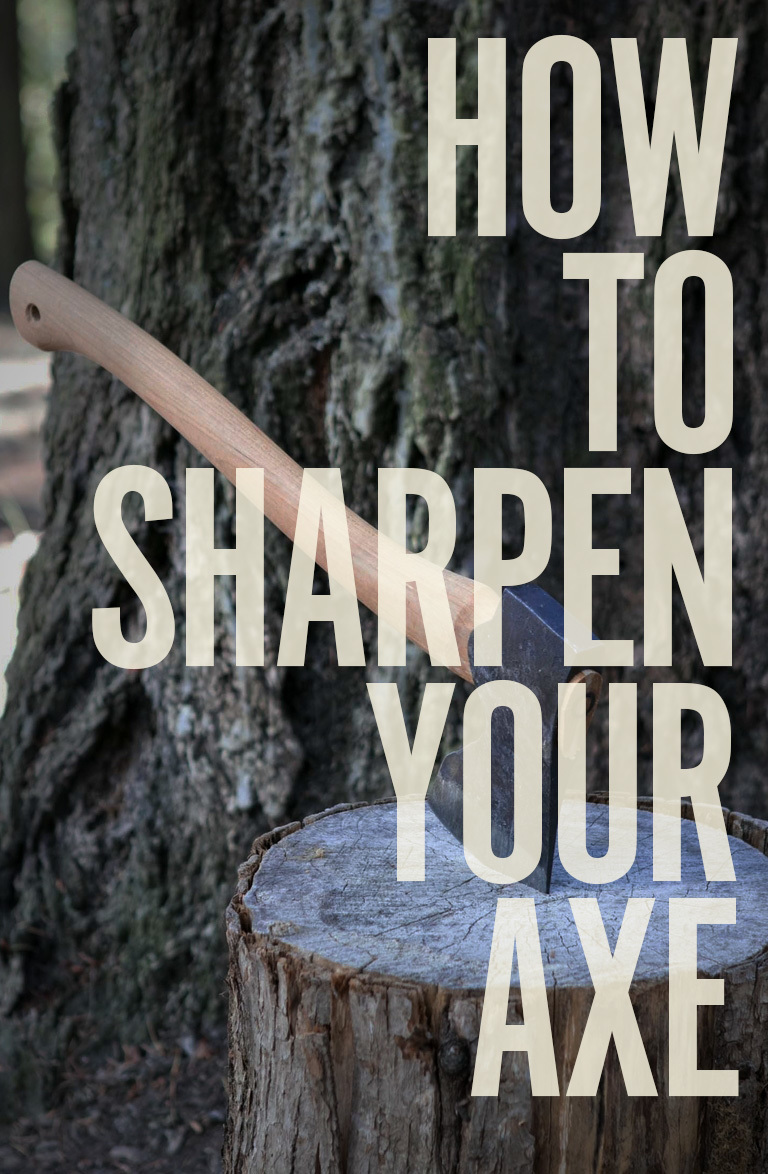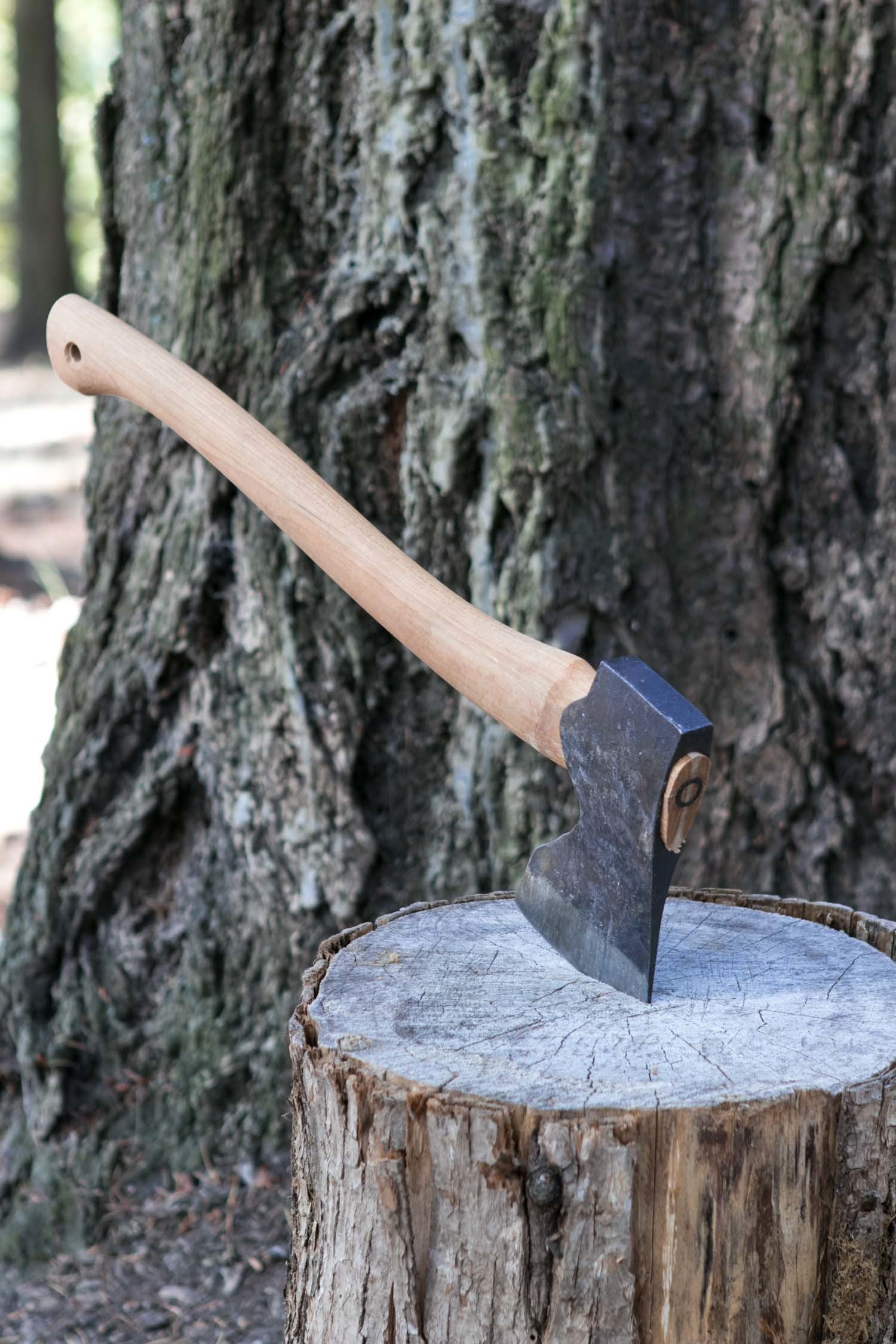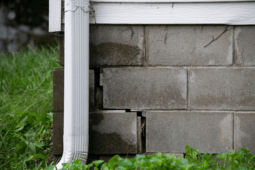How to Sharpen and Care For Your Axe
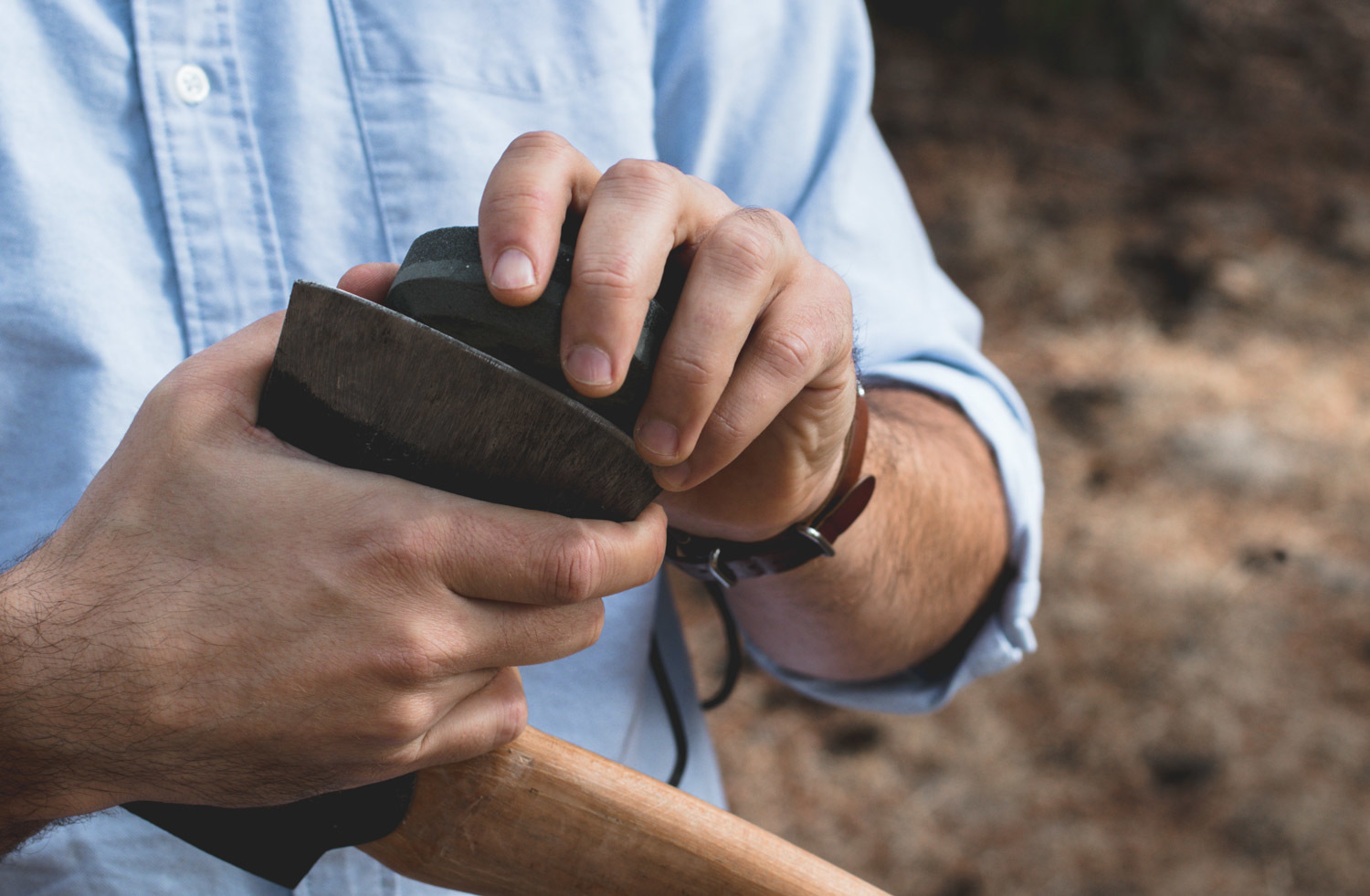
Fall means many things. Most important among them: firewood season. Whether building a campfire in a stone ring for cooking, heating your space via a woodstove, or just setting your indoor fireplace ablaze for some warmth, these next six months are all about the cheer that can only come from the presence of an open flame.
So, as we settle into the new half of the year, let's take a moment to address humankind's most primitive tool: the axe. Whether your splitting whole tree rounds, dividing logs into kindling, or getting creative with woodcarving, the process is simple, and only needs to happen once a year for the average non-lumberjack. Here's how to sharpen an axe.
Types of Axes and Sharpening
There are several types of axes, all of which can be sharpened the same way. The one exception is the broad axe, which has a single bevel on one side, and a flat opposite side, like a chisel. The broad axe is used to shape tree trunks into square-sided lumber or beams, so it needs the flat side to create the remaining edge. But if you own a broad axe, which is not suitable for chopping wood for fires, you likely already know this.
The other types of axes are all cared for in the same way: felling axes, splitting mauls, hatchets, froes, hand axes, and carpenter's axes all have a double-sided bevel. Depending on the use of the axe, this might be a 20° chisel-like bevel for cutting wood fibers across the grain, or a much broader 35-40° for splitting wood along the grain.
Thankfully, you won't need a protractor to figure this angle out. You can simply follow the existing bevel at which your axehead was ground at the forge to keep it just right for the intended purpose.
The other good news is: axes designed for splitting wood actually benefit from being not-as-sharp, as they'll get stuck in the wood and be hard to remove. Your goal here is to simply maintain a nice cutting edge so you can split the wood with the least amount of work.

How to Sharpen an Axe: Tools and Materials
The sharpening process itself can be accomplished with two simple, inexpensive hand tools. I prefer this method to using an electric grinder because 1) it's cheaper 2) it's easier to follow the existing bevel 3) it's portable, so you can take your tools out to the woods and do it on site and 4) there's no risk of overheating the steel, ruining its temper. Win, win, win, win.
The first tool is a mill bastard file, somewhere between 8 and 12″ long. These can be had for around $10. (You dont need a handle) The other is a two-sided sharpening stone “puck,” which easily slips into a pocket so you can take it out into the field. It's also well under $10.
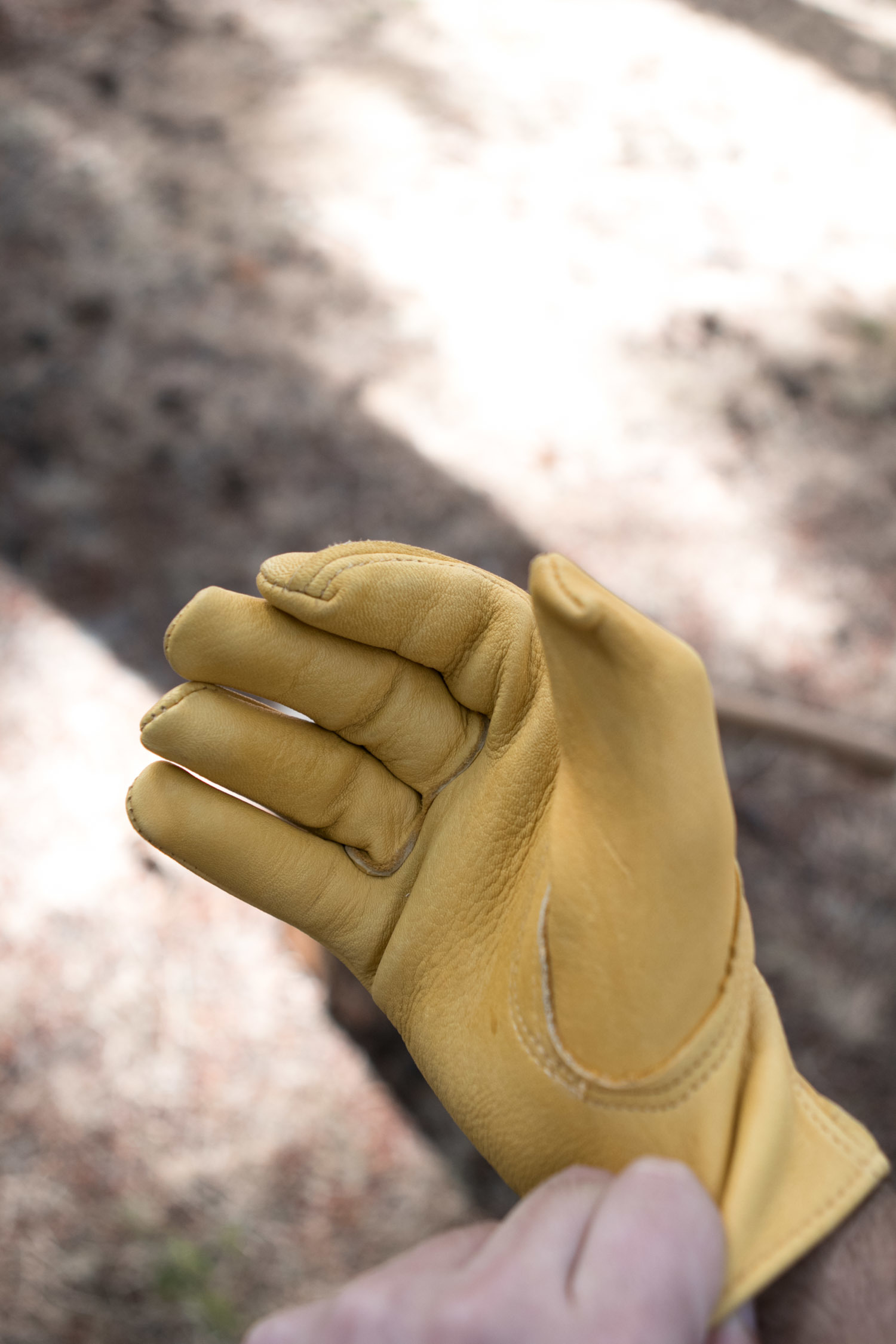
Also, be smart and wear work gloves for the first part of this process. You're dealing with a large sharp blade here, and you're intentionally pushing your hand towards its cutting edge. Plus, the filings and swarth generate by the process can be irritating and get stuck in your skin. Safety glasses with side shields are a good idea when using an axe for anything, seeing as there are wood chips flying about. The same is true for sharpening.
Other helpful items that might come in handy are listed in the box below:
ManMade Recommended:
- Forney 70325 Mill Bastard File, 12-Inch – About $10
- Lansky Puck – Dual Grit Multi-Purpose Sharpener – About $7.50
- Buckskin Leather Work Gloves (Thinsulate Lined, Extra Large) – About $15.50
- Magid Classic Black Safety Glasses – About $8.00
- Nicholson File Card & Brush – About $17.50
- WD-40 Multi-Purpose Lubricant – About $4.00
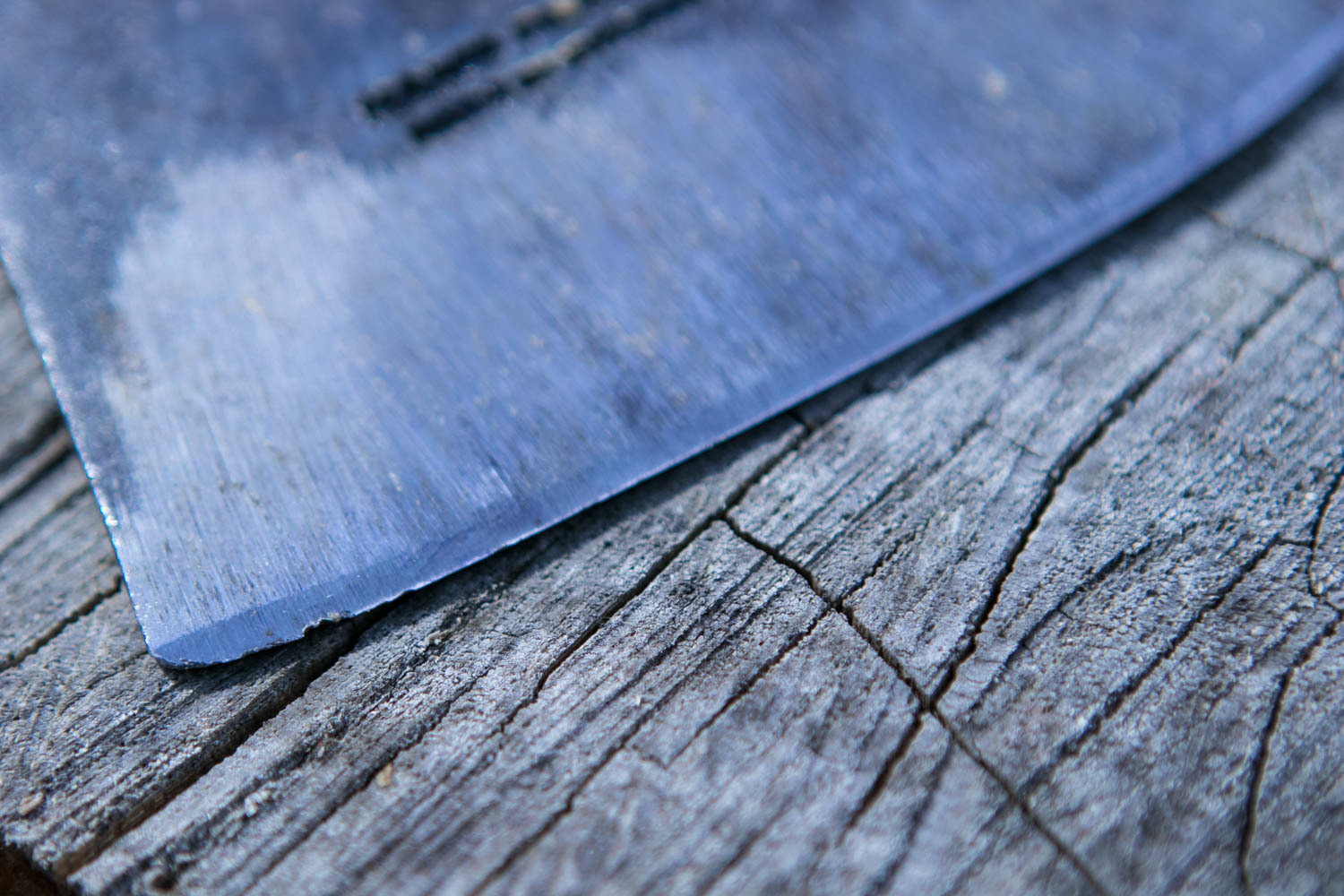
How to Sharpen an Axe: Grinding the Bevel
The grinding step of the process helps to re-establish the cutting bevel, while removing any nicks in the edge. Since an axe is a coarse wedge tool, it's made relatively soft steel so it can resist impact damage. This makes it easy to file away any unevenness in the edge in a minute or so. You can see several nicks and missing chips on the left side above.

Pull your work gloves on and grab your mill file. Set your axe somewhere where the head can hang over an edge: a workbench, rock, tree stump, branch, or the back of your truck. You can clamp it down if you want.
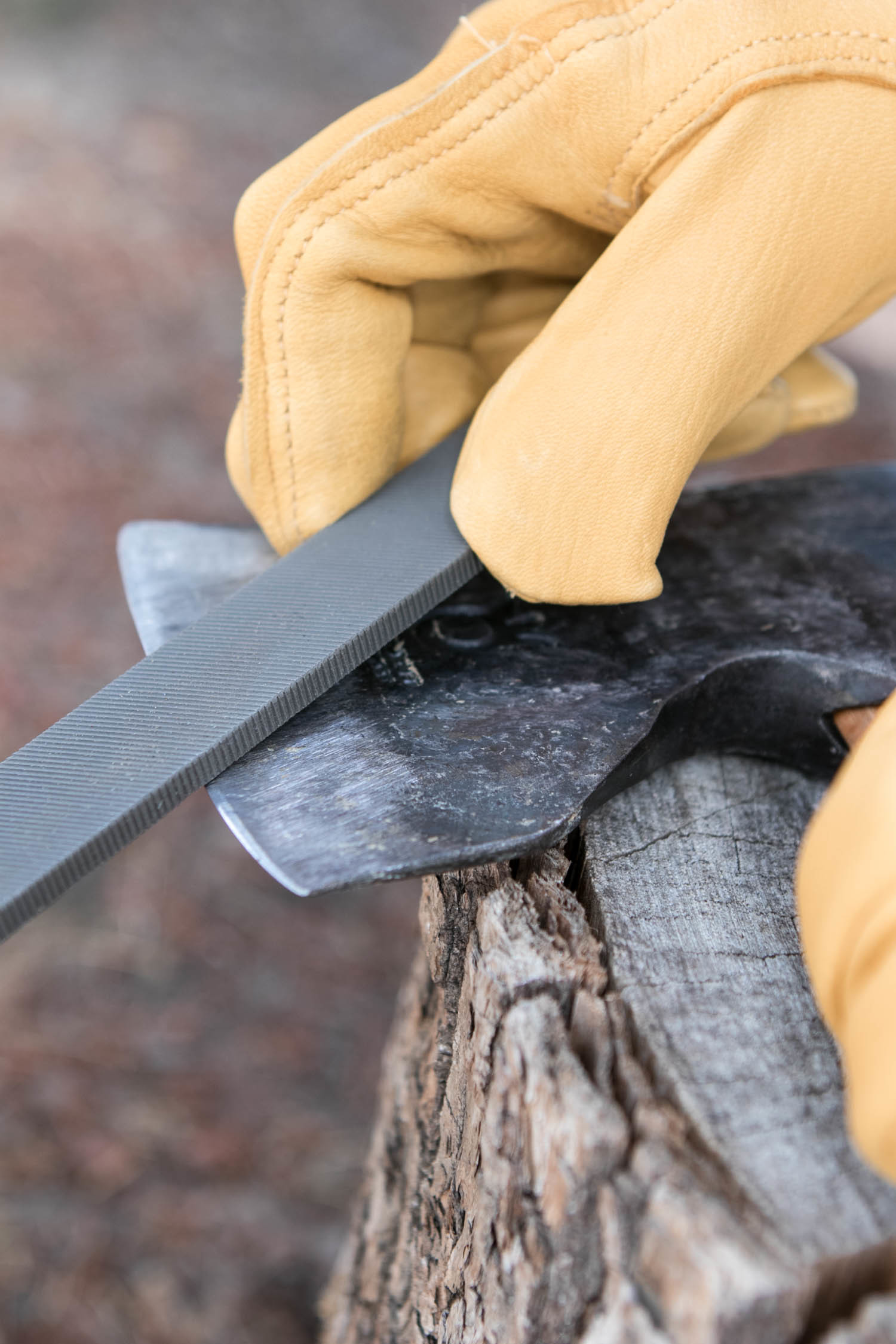
Find the small bevel at the edge of the axe head, and tilt the file until it rides on the bevel itself, not the broad faces of the wedge.
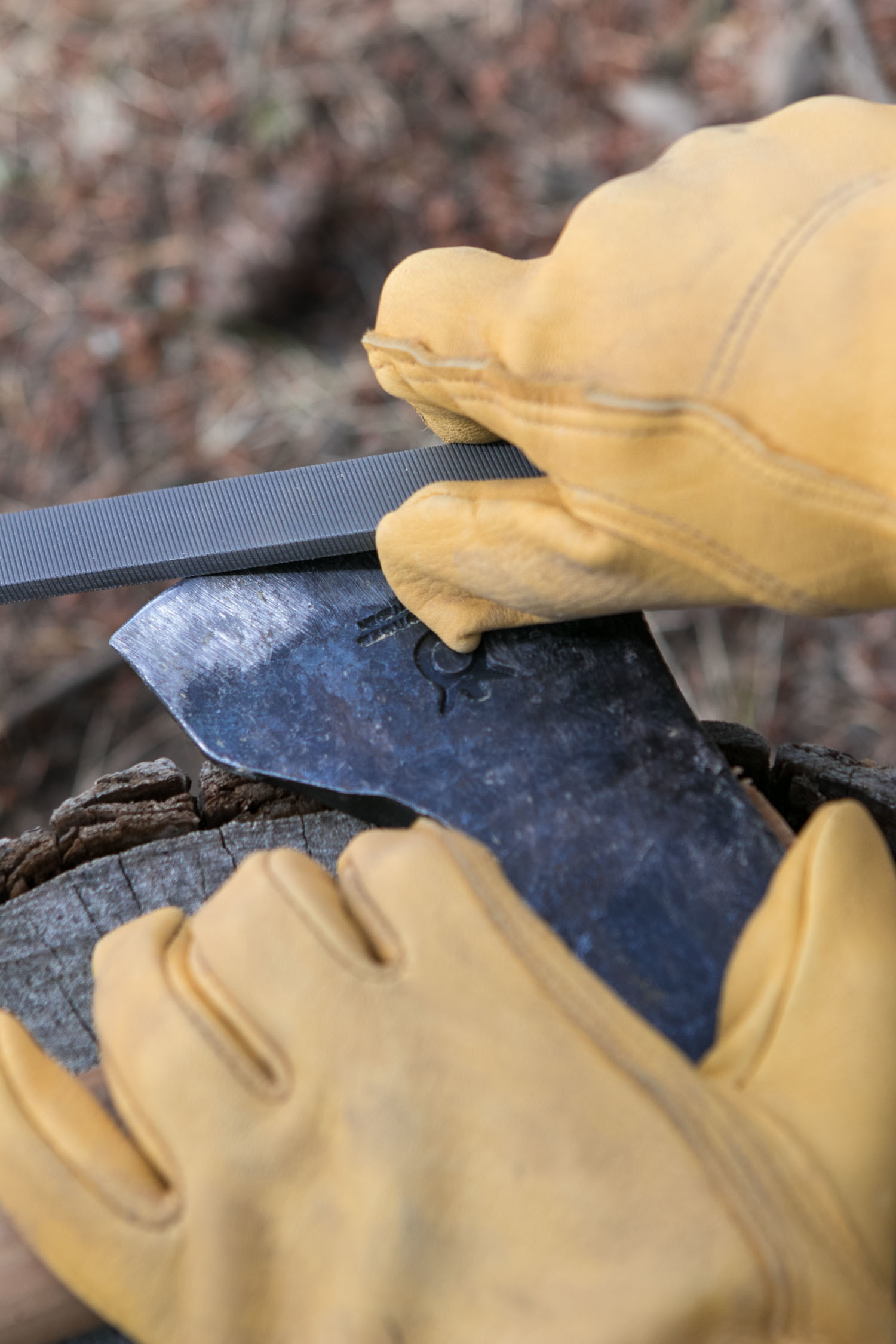
Starting at one end, use a pushing motion with your dominant hand to run the file along its length, following the bevel the entire way. Don't go back and forth with a sawing motion. Pushing in one direction helps you maintain the right angle.

Keep working until you've removed steel across the whole edge, and all nicks are gone. Coloring in the edge with a Sharpie can help you determine that you have a fresh edge. (I usually do this, but I forgot mine at home.) When you're done with the first side, flip and repeat on the second side.
Your axe is now “reground,” and there is fresh steel along the whole edge. Now, we simply need to refine it.
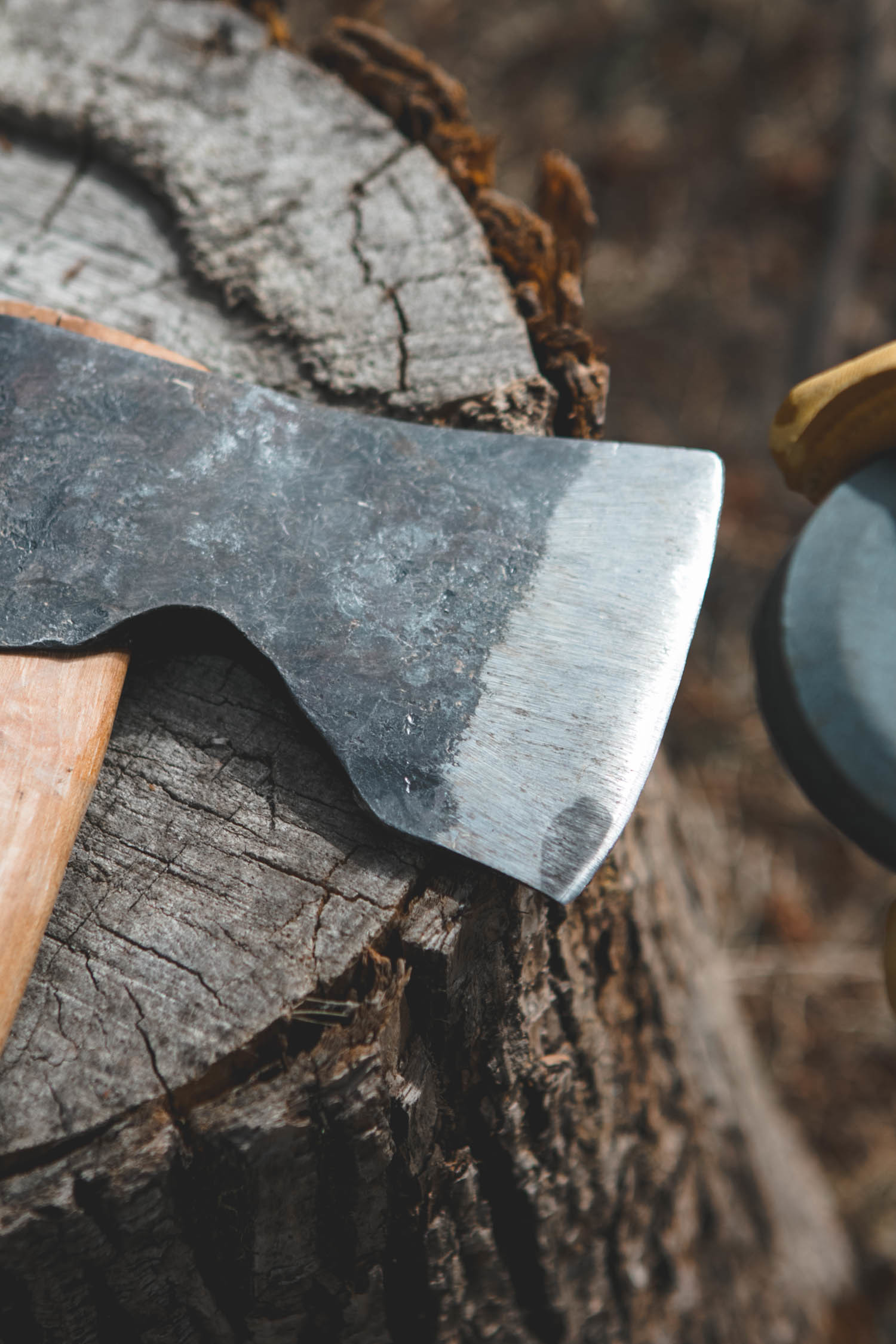
How to Sharpen an Axe: Honing the Edge
With the coarse work of shaping done, now we'll make the edge even finer with progressive grits. While you only need to regrind the bevel once a year, you can do this quick honing process before every chopping session. If you notice a decrease in cutting ability at any time, touching up the edge with the stone will likely solve your problems.

These sharpening pucks have been favored by axe-wielders for generations. They're lightweight, inexpensive, and they work great. Each has two sides, one coarser, one finer. You should be able tell which is which with visual cues, and feel the difference with your fingers. On my stone, the darker side is coarser.
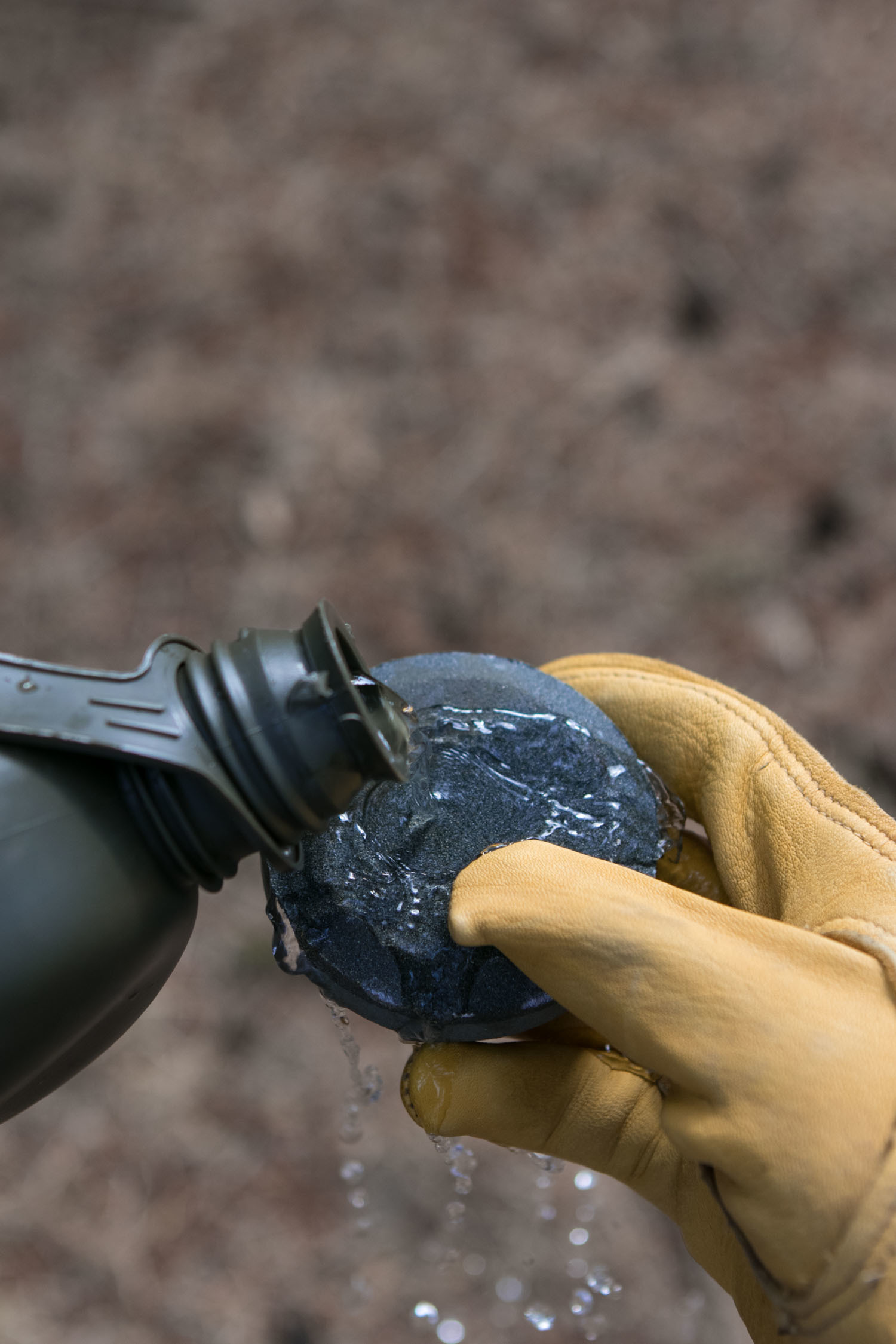
Lubricating your stone with a little water will help it cut faster and smoother. If you don't have any on you, spit works just fine.

Now, just follow the same method as before: use a pushing motion to follow the bevel. Locking your elbow and moving your whole torso will help you maintain a straight motion.
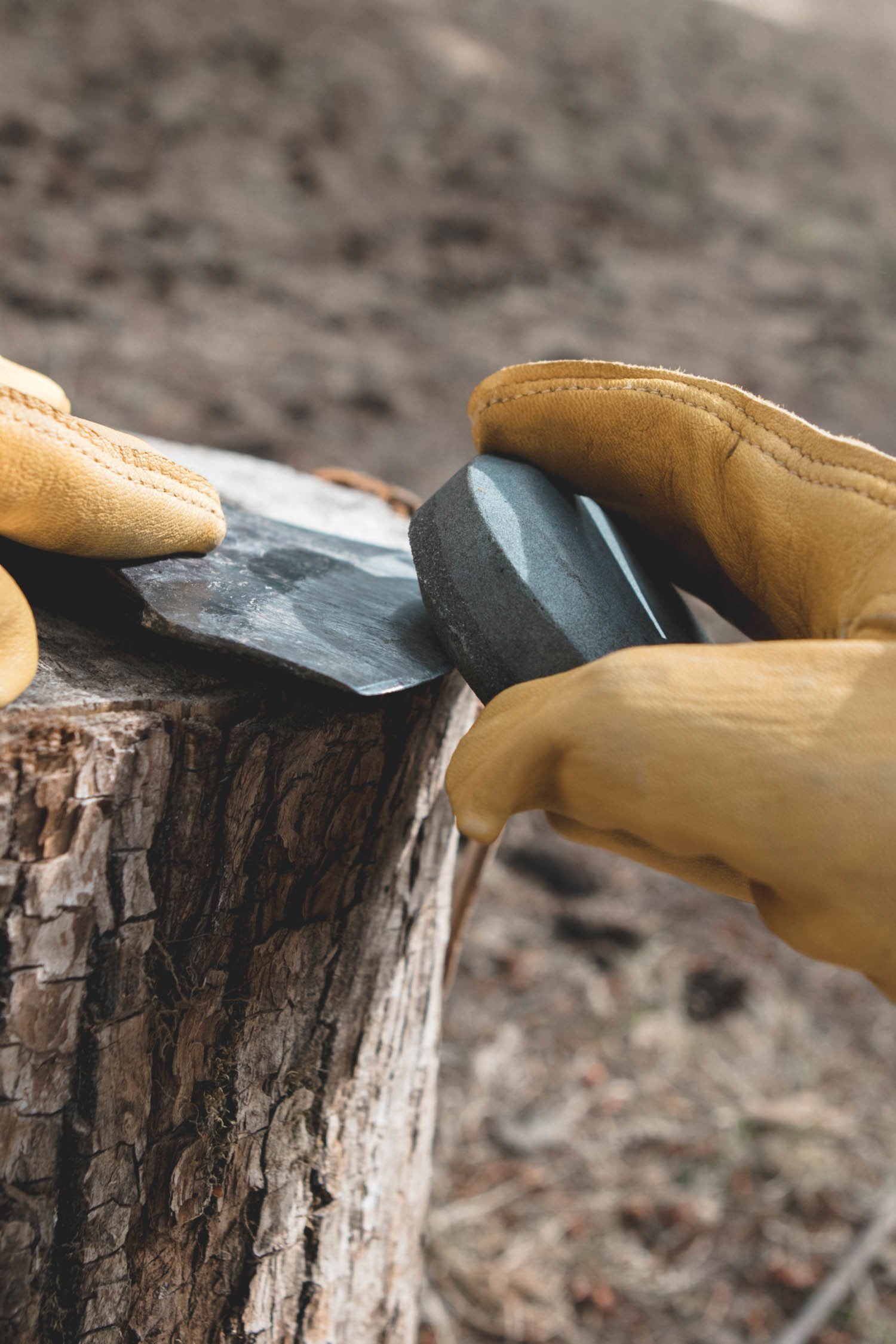
Complete one side of the axe with the coarse stone, then address the other.
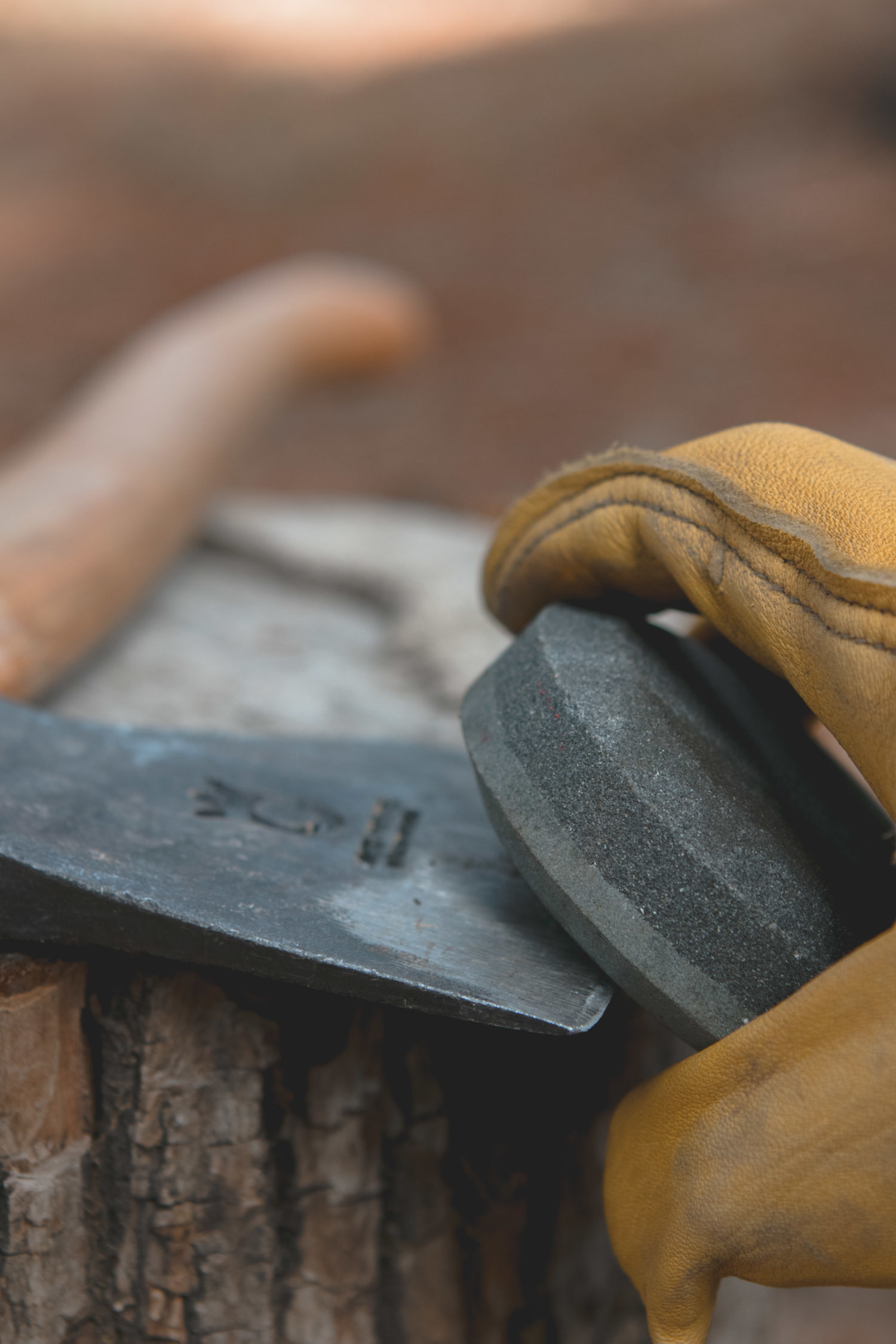
You can guess what happens next. Simply flip the stone the fine side, wet it again, and repeat.

Once you've completed both sides, take off your gloves, and gently touch the blade edge. You should feel a small burr on the first side. This is a good thing: it means you've now exposed new steel, and you're nearly sharp.
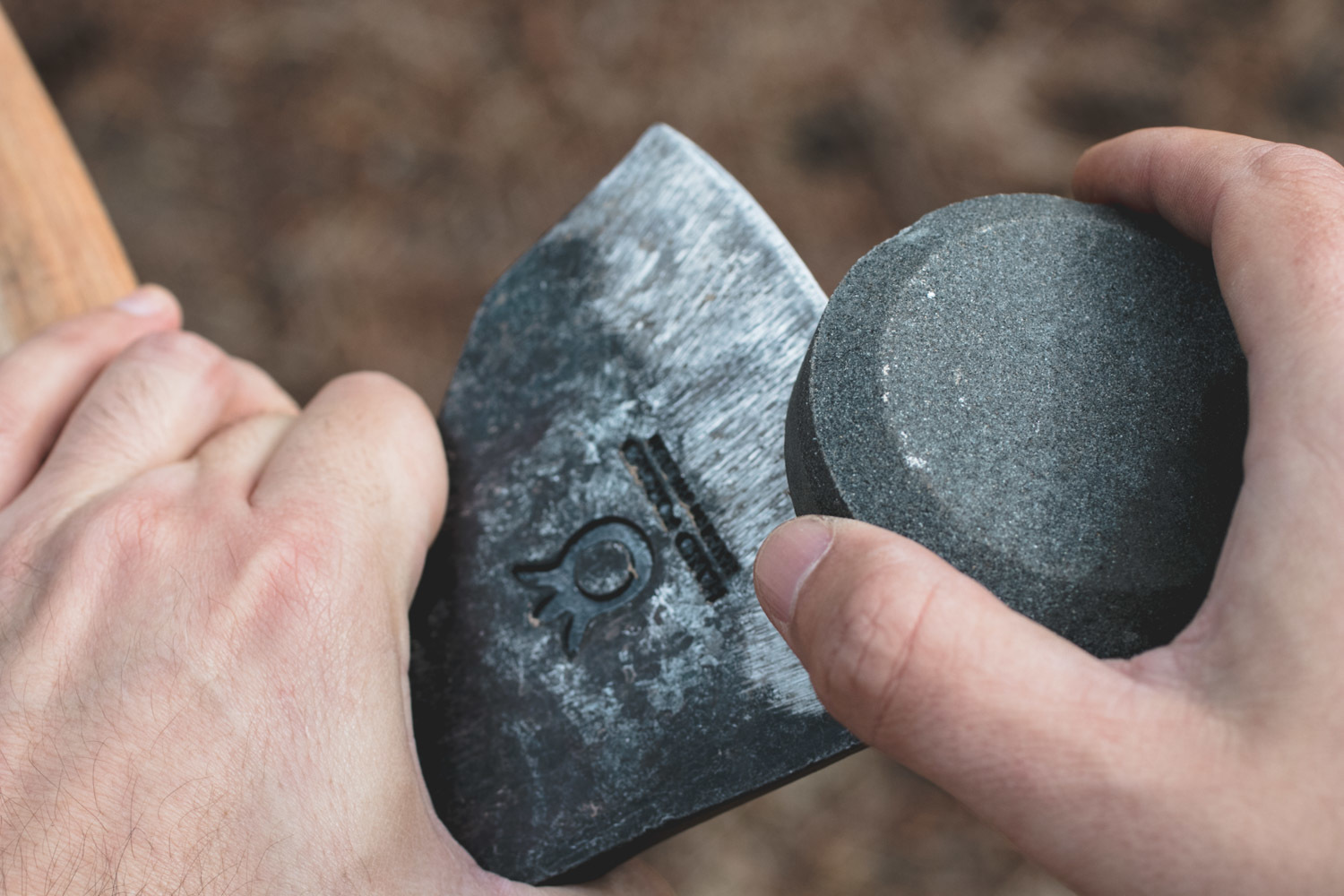
The final step is to simply get rid of the burr by taking 1-2 smooth strokes with the fine side of the stone. By realigning it, you create a “wire edge” – the meeting of two planes at a single point, which, as it happens, is the literal definition of a sharp tool.
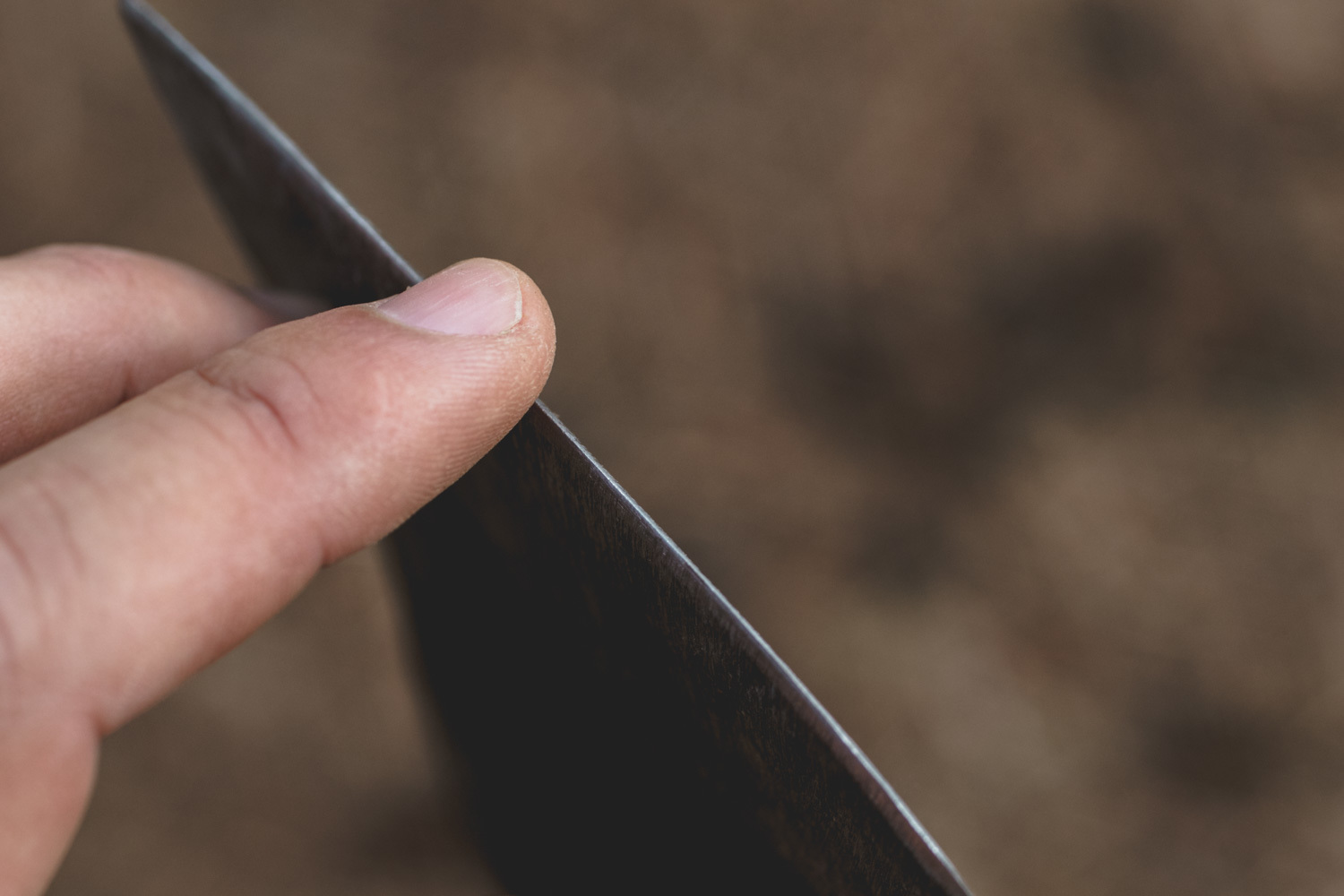
Sight down the edge in good light. If you're sharp, it will be more-or-less invisible along the length.
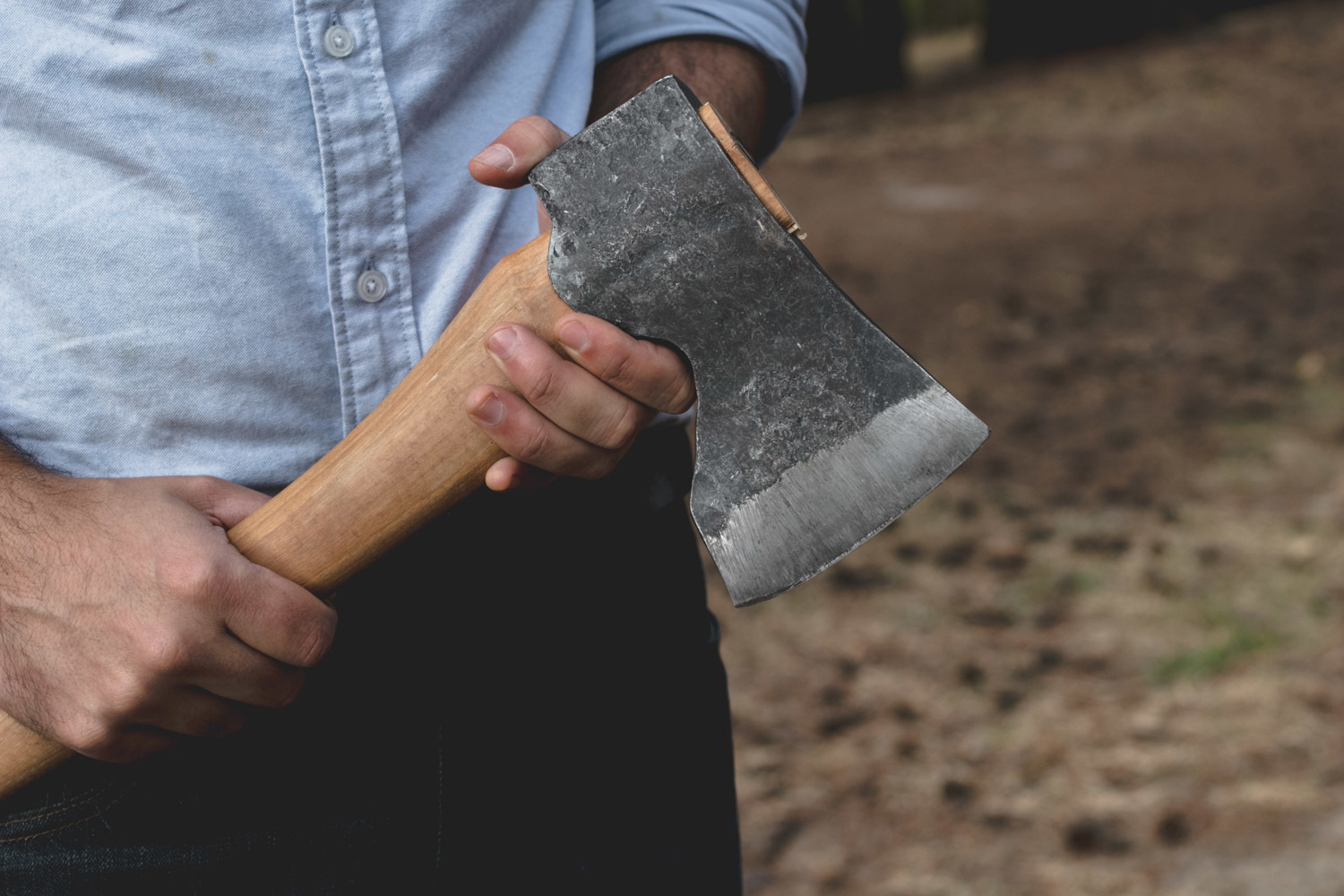
How to Care For Your Axe
Lastly, wipe the blade clean. If you have some accessible, apply a little WD40 or machine oil to the new bevel. You've exposed new steel, and applied water to it, so the oil can help prevent rust.
Once your done chopping wood for the day, wipe the blade clean, and when you get home, apply any type of machine oil to the head. It's okay if it rests on there during storage. You can wipe it off the next time you use it.
Axes are best stored hung on a wall or tool board to protect the edge. If yours came with a leather sheath, by all means — use it.
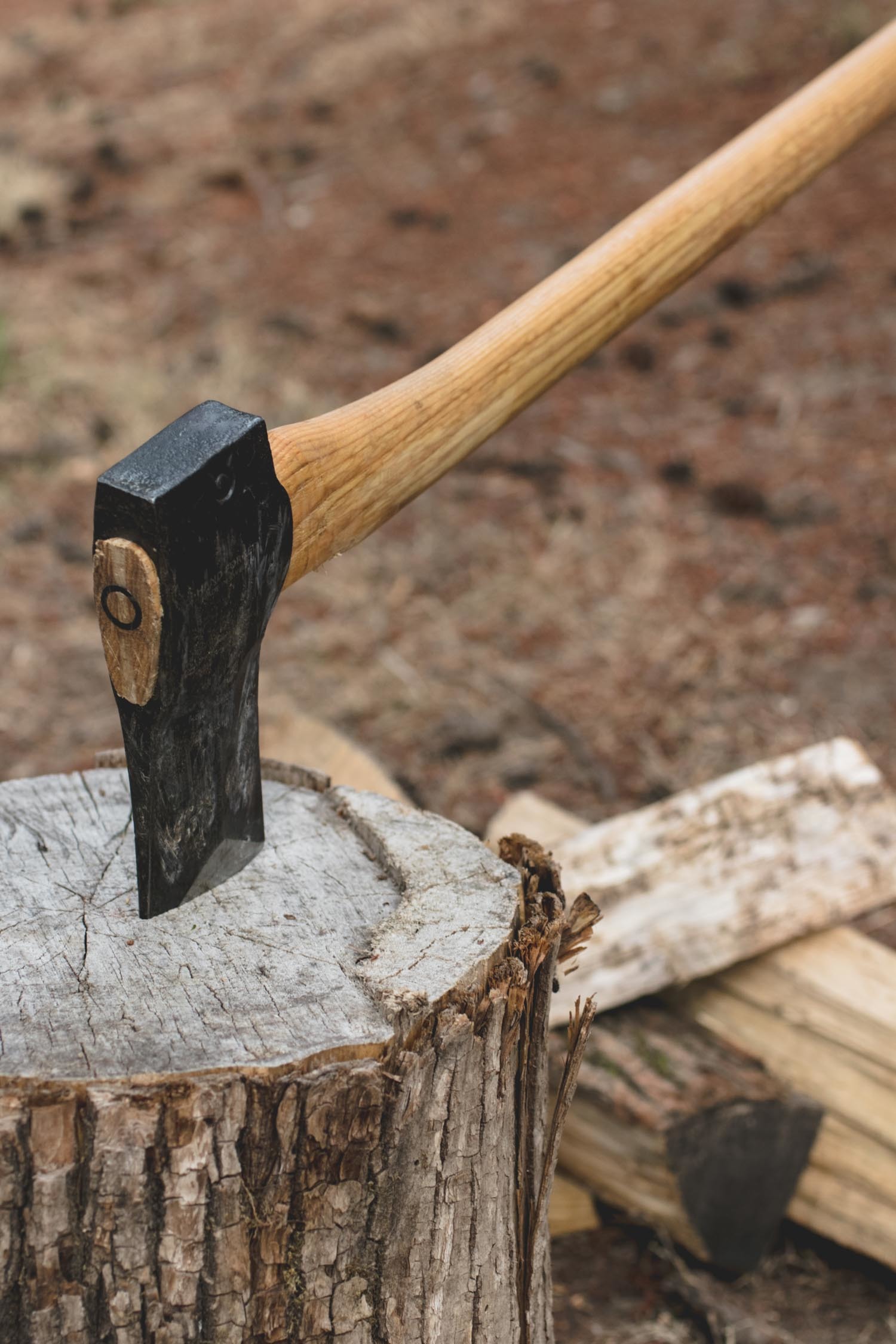
If you're intimidated by all the words and photos here, don't be. This sharpening process can be done in five minutes with two simple tools. I included all the images for clarity. You don't need any experience with sharpening, and once you've learned how to sharpen an axe, it can be touched up in just a few seconds. Just remember this simple rule: always, always follow the existing bevel. If you do that, you can't really mess it up.
If you don't have one already, but are interested in learning how to sharpen an axe and chopping your own wood, the two tools used in this post/photoshoot are both by the Swedish maker Husqvarna. They're the 19″ Wooden Carpenter's Axe, and the 30″ Wooden Splitting Axe. I've had the splitter for about three years, and the carpenter's axe for eighteen months. I think they're a great value for the price. They work great, and look awesome. I highly recommend.
If you have any questions on how to sharpen an axe, ask away in the comments below. Happy Chopping.
